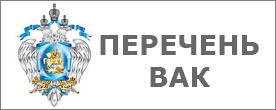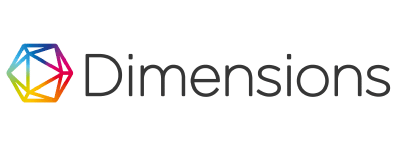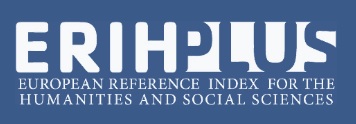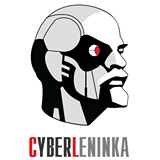S. N. Grinyaev. Rearming Europe by 2030: Challenges and Prospects
https://doi.org/10.15507/2413-1407.129.033.202503.518-530
EDN: https://elibrary.ru/dbhkyx
УДК / UDC 355.2 (4)
Abstract
Introduction. The relevance of this research stems from the sharp increase in global instability and the shifting balance of power, which compel the European Union (EU) to reconsider its security strategies. The aim of this article is to provide a comprehensive analysis of the EU’s military-strategic transformation in the context of its rearmament plans by 2030 and to assess the potential implications for international relations, particularly given the escalation of tensions with Russia, the United States, and the growing influence of China.
Materials and Methods. The study employs systemic analysis, comparative methodology, and expert assessments. The research is based on open-source materials, official EU documents (such as the White Paper on European Defence, the “Readiness 2030” Rearmament Plan, and the EU Internal Security Strategy), as well as analytical reports from leading Russian and international scholars. This methodological approach enabled the identification of key trends and constraints affecting the implementation of EU defense initiatives.
Results. The research reveals that the EU faces significant challenges, including limited resources, dependence on US technologies, internal economic disparities, and a lack of consensus on critical issues such as the formation of European nuclear forces. The analysis indicates that achieving the stated objectives by 2030 is questionable, and that current strategic initiatives require additional coordination and funding. Special attention is given to the risks posed to Russia and the broader implications for global stability
Discussion and Conclusion. The article concludes that the EU’s rearmament is not only a response to external threats but also an attempt to adapt to internal challenges. The practical significance of the study lies in providing an analytical foundation for forecasting the development of European defense policy and for devising response strategies for national and international actors. Future research should focus on the EU’s interactions with global powers (the US, China) and on assessing the impact of new initiatives on the architecture of international security. The study’s limitations include insufficient transparency of military budget data and uncertainty regarding political decision-making within the EU.
Keywords: European rearmament, international security, European Union, military-strategic autonomy, Readiness 2030, nuclear forces, EU economy, Russia, USA, China
Conflict of interest. The author declares no conflict of interest.
For citation: Grinyaev S.N. Rearming Europe by 2030: Challenges and Prospects. Russian Journal of Regional Studies. 2025;33(3):518–530. https://doi.org/10.15507/2413-1407.129.033.202503.518-530
REFERENCES
1. Aleshin A.A. The EU‒NATO Cooperation after the Start of the Special Military Operation. Sovremennaya Evropa. 2024;(5):189–200. (In Russ., abstract in Eng.) https://doi.org/10.31857/S0201708324050152
2. Żebrowski A. Threats to the European Security Space of the Third Decade of the XXI Century (Selected Aspects). Security Dimensions. 2024;48(48):165–206. https://doi.org/10.5604/01.3001.0055.0514
3. Miszczak K. “Strategiczny Kompas” Unii Europejskiej. Większe bezpieczeństwo i skuteczniejsza obrona UE – plan działań do 2030 r. Politeja. 2024;21(1):139–156. (In Polish, abstract in Eng.) https://doi.org/10.12797/Politeja.20.2024.88.1.09
4. Cuong N.M., Chelabi K., Hadziahmetovic N., Sateeshchandra N.G., Nghiem T. Institutional Constraints and Reform: European Union’s Responses to the Ukraine Conflict Challenges. International Journal of Innovative Research and Scientific Studies. 2025;8(1):1254–1266. https://doi.org/10.53894/ijirss.v8i1.4577
5. Varma T. European Strategic Autonomy: The Path to a Geopolitical Europe. The Washington Quarterly. 2024;47(1):65–83. https://doi.org/10.1080/0163660X.2024.2327820
6. Béraud-Sudreau L., Giegerich B. NATO Defence Spending and European Threat Perceptions. Survival. 2018;60(4):53–74. https://doi.org/10.1080/00396338.2018.1495429
7. Ålander M., Paul M., Swistek G. Zeitenwende im arktisch-nordatlantischen Raum. Außen- und Sicherheitspolitische Folgen des NATO-Beitritts von Finnland und Schweden. Zeitschrift für Außen- und Sicherheitspolitik. 2022;(15):361–371. (In German, abstract in Eng.) https://doi.org/10.1007/s12399-022-00930-8
8. Brooks S.G., Meijer H. Europe Cannot Defend Itself: The Challenge of Pooling Military Power. Survival. 2021;63(1):33–40. https://doi.org/10.1080/00396338.2021.1881251
9. Gheciu A. NATO, Liberal Internationalism, and the Politics of Imagining the Western Security Community. International Journal: Canada's Journal of Global Policy Analysis. 2019;74(1):32–46. https://doi.org/10.1177/0020702019834645
10. Gromyko A.A. Where is the World Heading? The Chronicle of Grand Transformation. Sovremennaya Evropa. 2023;(2):180–185. (In Russ., abstract in Eng.) https://doi.org/10.31857/S0201708323020146
11. Fenenko A.V. Wars in the World Orders’ Structure. Analysis and Forecasting. IMEMO Journal. 2022;(3):13–36. (In Russ., abstract in Eng.) https://doi.org/10.20542/afij-2022-3-13-36
12. Danilov D.A. NATO in the Arctic: Incentives and Impediments. Nauchno-analiticheskii vestnik IE RAN. 2024;(5):7–17. (In Russ., abstract in Eng.) https://elibrary.ru/item.asp?id=77441694
13. Aleshin A. Scientific Discourse on NATO's Strategic Evolution. International Trends Journal. 2022;20(4):136–156. (In Russ., abstract in Eng.) https://doi.org/10.17994/IT.2022.20.4.71.1
14. Iacob C.-G. The Strategic Repositioning of the European Union in the New Global Geopolitical Context. The Romanian Economic Journal. 2023;26(86):88–100. Available at: https://clck.ru/3NjaNN (accessed 10.01.2025).
15. Miloradović N.М. Contemporary Security Challenges and their Impact on the Increase of the Military Spending and the Budget for the Development and Procurement of Weapons and Military Equipment. Vojno delo. 2023;75(3):30–47. (In Bosnian., abstract in Eng.) https://doi.org/10.5937/vojdelo2303030M
16. Kondratieva N.B. Transatlantic Economic Relations at a Crossroads. Sovremennaya Evropa. 2024;(6):89–99. (In Russ., abstract in Eng.) https://doi.org/10.31857/S0201708324060081
17. Calcara A. Cooperation and Conflict in the European Defence-Industrial Field: The Role of Relative Gains. Defence Studies. 2018;18(4):474–497. https://doi.org/10.1080/14702436.2018.1487766
18. Freedman L. Europe’s Nuclear Deterrent: The Here and Now. Survival. 2025;67(3):7–24. https://doi.org/10.1080/00396338.2025.2508078
19. Fayet H., Futter A., Kühn U. Forum: Towards a European Nuclear Deterrent. Survival. 2024;66(5):67–98. https://doi.org/10.1080/00396338.2024.2403218
About the author:
Sergey N. Grinyaev, Dr.Sci. (Engr.), Chief Researcher, Department of Country Studies, Center for Arctic Studies, Institute of Europe, Russian Academy of Sciences (11 Bldg. 3 Mokhovaya St., Moscow 125009, Russian Federation), ORCID: https://orcid.org/0000-0001-6511-9553, Researcher ID: ADQ-8034-2022, Scopus ID: 57513756200, SPIN-код: 4645-8700, sgreen@csef.ru
Availability of data and materials. The datasets used and/or analyzed during the current study are available from the author on reasonable request.
The author has read and approved the final manuscript.
Submitted 26.08.2024; revised 06.05.2025; accepted 13.05.2025.

Материалы журнала "РЕГИОНОЛОГИЯ REGIONOLOGY" доступны по лицензии Creative Commons «Attribution» («Атрибуция») 4.0 Всемирная
















